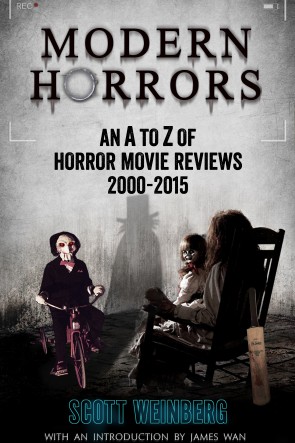THE BABADOOK: A PSYCHOPATHOLOGICAL PERSPECTIVE{0}
************************ SPOILERS AHEAD *************************
If the new horror movie The Babadook really is the scariest film of the year, as many critics have claimed (a view with which we tend to agree), it isn’t because there’s something inherently terrifying about a monster from a book coming to life; at least, not in any rational sense. It’s scary because the creature that gives the film its name, and its horrifying dark presence, is more than just a monster under the bed, the thing hiding in the shadows. It’s the darkness within us all: the shadow.
In the story, from first-time writer-director Jennifer Kent, Amelia (Essie Davis) has suffered a unique tragedy: driving to the hospital to have her first child, Amelia’s beloved husband is killed in a car crash, leaving her alone to raise their son, Samuel (Noah Wiseman). Every year, instead of being a celebration, Samuel’s birthday is a bitter reminder of Amelia’s tragic loss. But as his seventh birthday approaches, Samuel’s growing obsession with fighting monsters threatens to wreak havoc on their lives as they appear to be menaced by a creature known as ‘The Babadook’, which has seemingly come to life from the pages of a book Samuel finds on the shelf. “If it’s in a word, or it’s in a look, you can’t get rid of The Babadook…” goes the story, which suggests that the creature is named for his distinctive knock: Ba-ba-ba-dook-dook-DOOK! But what is the story really about?
“I wanted to talk about the need to face the darkness in ourselves and in our lives,” Kent, who expanded the story from her own 10-minute short film Monster, has said. “That was the core idea for me: to take a woman who’d really run away from a terrible situation for many years and have to face it. The horror is really just a byproduct.” Psychotherapist Sandra Hughes agrees. “Amelia is suffering from undiagnosed posttraumatic stress disorder (PTSD),” she says, referring to the serious psychological disorder suffered by people exposed to extreme stress, and which can lead to insomnia, panic attacks, irrational fears, nightmares, self-destructive impulses, substance abuse, anger management issues and depression. “For all these years it hasn’t been diagnosed, because she has resisted professional help, such as grief counseling, and hasn’t recognised that she needs help. If you look at the way she deals with her son’s acting out, when the principal suggests he should see a specialist, she denies that, and instead takes him out of school. That’s probably what she was doing to herself: denying the problem and saying everything’s okay.”
Psychopathologically speaking, The Babadook manifests itself at a crisis point in Amelia and Samuel’s dysfunctional, co-dependent life, leading to a perfect storm of factors: several sleepless nights, Samuel’s approaching birthday (also the anniversary of her husband’s death), the school’s inability to help with Samuel’s behavioural problems, and the declaration by her sister that her daughter no longer wants to share a birthday party with Samuel. The book, says Hughes, is the trigger that brings Amelia’s ‘shadow’ into the light. “In psychopathological terms, ‘the shadow’ is the dumping ground for those characteristics of our personality that we try to hide or deny – anger, hatred, jealousy and so on – but which underlie the ‘persona’ we present to the world. Amelia unconsciously blamed her son for the loss of her husband, the love of her life, but because she couldn’t face that unpleasant reality, or show anger towards her son for the loss he felt – after all, it wasn’t his fault the circumstances of his birth were so tragic – so she buried all those uncomfortable feelings somewhere deep in her unconscious, so she didn’t have to look at them. We all have things we don’t want to deal with, that we ‘put to the shadow’ because we are afraid to look at them. At night, however, you don’t control your unconscious, so the mask you wear in daylight slips, and those buried feelings come out.
“When Amelia had a breakdown – what we call a psychotic episode – she said everything to the little boy that she had felt for years, but wouldn’t admit: ‘You ruined my life,’ ‘You’re a little shit,’ ‘You are the one who should be dead,’ etc. – all the things that, in daylight, under normal circumstances, she couldn’t say to him; from the psychological point of view you might say that finally she was expressing those feelings she had been carrying for years. And of course Samuel says to her, ‘It’s not you, it’s the Babadook saying that,’ because she was the one who wouldn’t let anyone hurt him, who dealt with his tantrums, took his side against the school regarding his behavioural problems.” Samuel, too, was carrying the burden of her shadow, she says, “so you might blame all his acting on that as well, because quite often, when we can’t deal with our shadow, we project that onto others – our kids, our partners, even random people. That’s why you sometimes have a situation where someone knocks into you on the street and you fly into a rage, because all the things you were holding in and couldn’t express suddenly explode.
“In The Babadook, there is no male figure in Samuel’s life,” she explains; “there is only his mother, his aunt, and her daughter. So Samuel takes on the role of the protector, creating the imaginary danger of the monster because it was easier for him to rationalise and face the monster – which was extremely scary – than to face his mother, who was supposed to be protecting him. Imagine the situation from the boy’s perspective,” she adds. “He was told the story that his father died while he was taking his mother to the labour ward, so imagine the shame and guilt he has to carry in his unconscious.” The way Samuel talks about what happened feels as though someone has had a grown-up conversation with him, which, says Hughes, isn’t always the best approach. “When the little girl told him, ‘Your dad died because he didn’t want to be your dad,’ imagine what that tapped into. Even for all those years that his mother never named it, the problem was that she blamed him, and he felt blamed as well, and felt that he had to take the responsibility and fix it. So the creation of The Babadook could, in his mind, be his opportunity to fix what he had done, even though he wasn’t to blame.” Was it too soon to tell Samuel what had happened to his father? “You have to be honest with children, but Amelia obviously never said to him, ‘Yes, that happened, but you are the most important thing in my life, your dad would love you, it’s not your fault.’ Or she could have said something like, ‘There was a mummy and daddy, they loved each other, but when it was time for you to come, daddy had to go to the angels, but he is watching over you,’ so that when The Babadook got into his head, he might have thought his father was protecting him, rather than having to fight the monster himself.”
Seen from this perspective, The Babadook seems to be the story of a mother failing to cope with raising a difficult child in tragic circumstances, and perhaps placing an unfair burden on her child, by projecting onto her son the shadow in her unconscious. Amelia is clearly having a psychological breakdown as a result of her undiagnosed posttraumatic stress disorder, and is having trouble coping. Kent herself seems to agree. “I wanted to show a real woman who was drowning in that environment,” she told The Guardian. “I thought that maybe I would be criticised by women, by mothers, because I’m not a mother. The opposite has happened; I’ve experienced a collective sigh of relief that women are seeing a mother up there that’s human. Sure, it’s an extreme situation but what I realise is that a lot of women have felt those feelings that Amelia goes through at some point along the way. It’s the great unspoken thing: we’re all, as women, educated and conditioned to think that motherhood is an easy thing that just happens. But it’s not always the case.”
David Hughes (@DavidHughesTwit)








